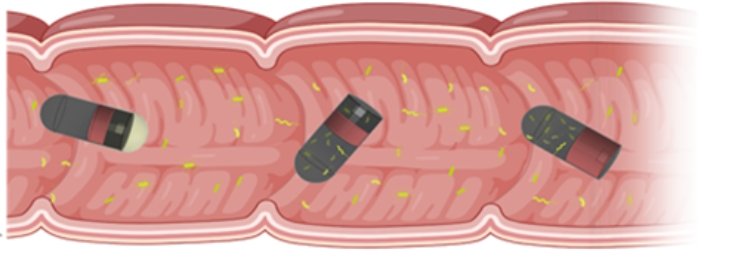"Most clinical-stage pipeline of vaccines is owned by entities in North America and Europe, while operations are hindered by IP restrictions"
October 01, 2022 | Saturday | Interviews | By Sanjiv Das
mRNA-based vaccines have several benefits over conventional vaccines, in that they are precise and only express a specific antigen and induce a directed immune response. These vaccines promote both humoral and cellular immune responses and induce the innate immune system. Dr Pradeep Nagalkar, Head, Quality Control, Haffkine Bio-Pharmaceutical Corporation weighs in on the advantages and challenges of mRNA vaccines.
Are mRNA vaccines only limited to COVID-19 treatment?
With the well-established field of small molecule or antibody-based drugs, we now have a new class of RNA-based drugs. By developing these diverse kinds of therapeutics together, it can be expected that diverse diseases with no treatment method today will be conquered in the near future. RNA Therapeutics is a rapidly emerging field of bio-therapeutics. These therapies are based upon a powerful and versatile platform which has nearly unlimited capacity to address unmet clinical needs.
The number of RNA drugs under development, and in clinical trials, is growing rapidly. The rapid growth of RNA therapeutics has been due to solving the problems of stability, delivery and immunogenicity. Whereas there is room for further improvement and innovation in each of these areas, the solutions have advanced to the point that RNA therapeutics are now feasible. Although several dominating players in the RNA bio-pharma sector have emerged, new small biotech startups as well as academic groups with transformative ideas are propagating.
In addition, hospital-based RNA therapeutics programmes will facilitate RNA-based drug development and accelerate the translation of transformative therapies from the lab bench to the patient’s bedside.
What could be the likely advantages?
mRNA-based vaccines have several benefits over conventional vaccines, in that they are precise and only express a specific antigen and induce a directed immune response. These vaccines promote both humoral and cellular immune responses and induce the innate immune system. mRNA expression in the body does not require nuclear entry, which diminishes the possibility of genomic integration. mRNA is quickly degraded by cellular processes after the induction of an immune response. The mRNA vaccine manufacturing is easily standardised because a change in the antigen does not affect the mRNA backbone’s physical-chemical characteristics. Additionally, the safety concerns for the viral contaminants are minimised since production is based on an in vitro cell-free transcription reaction. Although there are several benefits of mRNA vaccines, certain challenges also exist.
Currently, a well-established manufacturing platform for the generation of mRNA is lacking and several combinations of manufacturing steps are required. These can be grouped into upstream processing, which comprises the enzymatic generation of mRNA, and downstream processing, which includes the unit operations required to purify the mRNA product. In addition, the need for cold chain storage for mRNA vaccines poses logical difficulties. Therefore, there is a need for the development of thermostable vaccines for warm countries or those without reliable cold chain storage.
What are the challenges associated while manufacturing mRNA vaccines?
For next-generation mRNA vaccines to have an impact, several challenges should be considered. With regards to the targeted disease, multi-valency has yet to be established across strains and other pathogens. Clinical questions include reactogenicity and its implications for risk-benefit profiles outside of a pandemic setting, immunogenicity (pathogens other than SARS- CoV-2 may need a greater cellular response) and durability of protective immunity. For delivery, intramuscular administration requires skilled personnel, and products with stability at 4°C or ambient temperature in the liquid formulation are currently not available. Cost-effective and sustainable manufacturing methods are also lacking. Most of the clinical-stage pipeline of vaccines is owned by entities in North America and Europe, and there is uncertain freedom to operate in various countries owing to IP restrictions. Some entities are also based in lower middle income countries (LMICs) and face problems related to limited access to regulated facilities for clinical trial-grade material production.
Developmental challenges
mRNA vaccines can, theoretically, be produced rapidly, and the field has been advanced through immunogenicity and efficacy. However, there are various factors to consider; developing vaccines is not straightforward, given relatively high failure rates and high time and monetary costs required to establish the complex processes and production capabilities. The development of any biotechnological product is fraught with difficulties and misdirection.
With mRNA vaccines, the main obstacles faced by developers include:
- Unintended effects: With patient safety, a risk arises that the mRNA strand contained within the vaccine could elicit an unintended immune reaction (particularly inflammation and autoimmune reactions). To address this, a key focus of development is on creating mRNA vaccine sequences that precisely mimic those produced by human cells.
- Delivery: The effective action of a vaccine rests on the mechanism of delivery. The complexity arises because when the mRNA enters the human body, it is rapidly broken down. Hence, stabilisation is essential to protect the mRNA strand until it reaches its target. The strategy involves incorporating the mRNA within a larger molecule. This can be enhanced by further containment within particles or liposomes (spherical vesicles composed of lipid bilayers). For the COVID-19 vaccines, the mRNA is protected by nanoparticles. A further delivery consideration is finding the most effective way for mRNA to reach the cell. For the vaccine to be effective, mRNA must penetrate the barrier of the lipid membrane to reach the cytoplasm to be translated into functional protein.
- Storage: Most vaccines are limited by their storage time (stability) and required holding temperatures. Currently, mRNA vaccines require storage within a freezer or refrigerator, which will affect their global distribution. Developing vaccines that do not rely on cold supply chains will significantly increase their applicability.
- A further challenge is with process validation. The standard regulatory requirement is for full-scale batches to be produced. Given the scarcity of the material and the urgent need (in most cases) for vaccines, adopting a risk-based strategy based on ICH Q9 to show equivalent validation at a smaller scale is required, together with obtaining regulatory agreement. This can be supported by applying process analytical technology to provide real-time results to feed into a continuous validation paradigm. The core objective is to demonstrate the consistency of the manufacturing process. As the characterisation of mRNA technology continues, adopting a risk-based approach can be advanced, provided that different biotechnology companies are prepared to share knowledge.
The development of a vaccine needs to be planned according to the principles of quality by design and quality risk management. Consideration must be given to the design space and the design of experiments. Overcoming these challenges requires a combination of knowledge capture, scientific reasoning, learning from data analysis, and risk-based methodologies.
Will mRNA vaccines be accessible and sustainably produced for whole worldwide use?
Around 90 lead developers of mRNA vaccines have been identified globally. The majority of mRNA vaccine development is being led by biopharma companies based in Asia and Oceania or North America. Regional vaccine manufacturing and distribution sites can prevent barriers to vaccine access created by national and economic interests. The majority of mRNA manufacturing sites are located or announced in North America, Europe and Asia and Oceania (>15 each). Africa and Latin America also joined the race and recently announced mRNA manufacturing sites (>3), suggesting a growing interest in these regions. Before the COVID-19 pandemic, the commercialisation of mRNA vaccines was focussed on high-cost personalised cancer vaccines, and prophylactic vaccine development was slow and limited. With the demonstration of large-scale manufacturing of mRNA vaccines during the COVID-19 pandemic, the creation of local manufacturing capabilities holds promise for more equitable access to COVID-19 and other vaccines.
The World Health Organisation (WHO) has sought to facilitate mRNA vaccine technology hubs in developing countries (for example, the South African consortium to establish the first COVID-19 mRNA vaccine technology transfer hub in Africa). This ambitious initiative is described as a training centre for mRNA vaccine manufacturing. Similarly, the Pan American Health Organization (PAHO) has selected centres in Argentina and Brazil to develop COVID-19 mRNA vaccines, and private companies including Moderna and BioNTech have announced their intention to build manufacturing capacity in Africa with sizable investments. This way the vaccine will be accessible and sustainably produced for worldwide use.
---------------
Sanjiv Das
sanjiv.das@mmactiv.com










